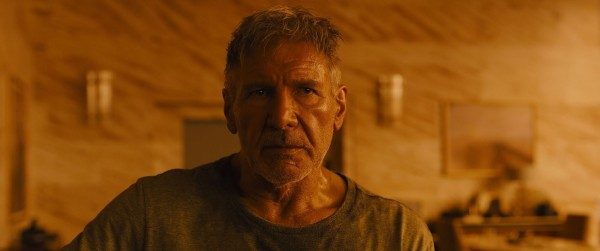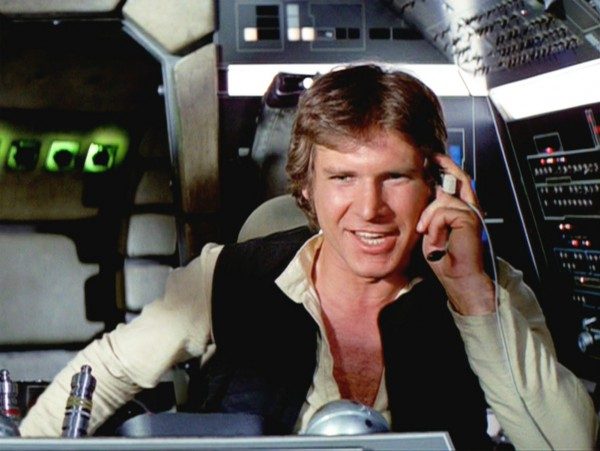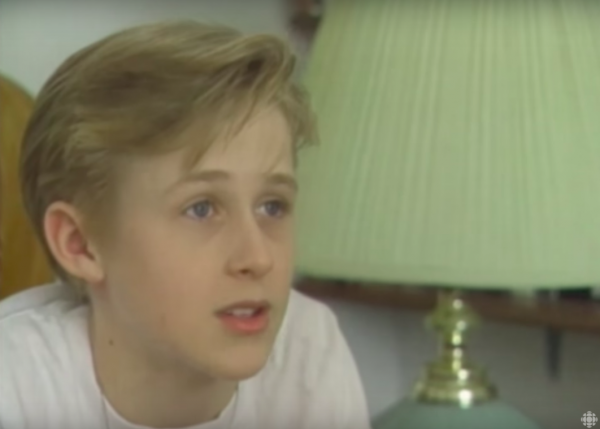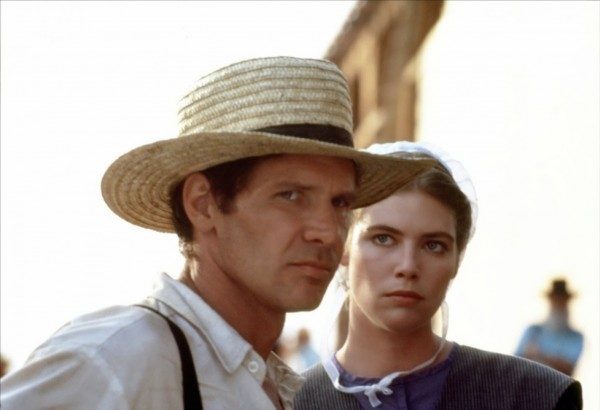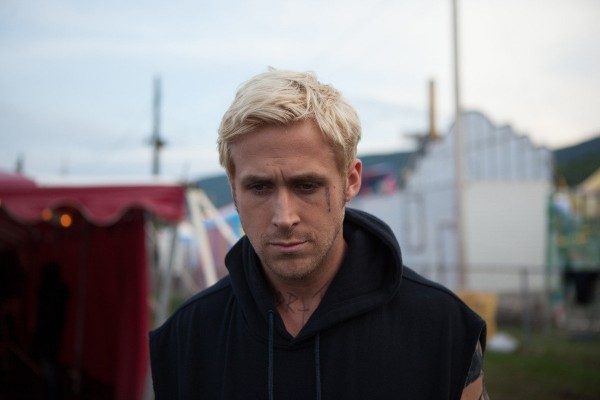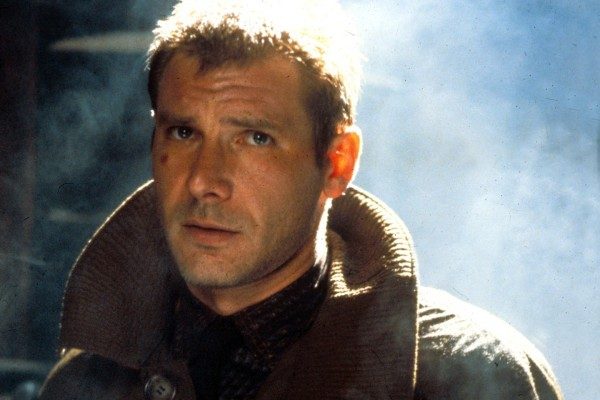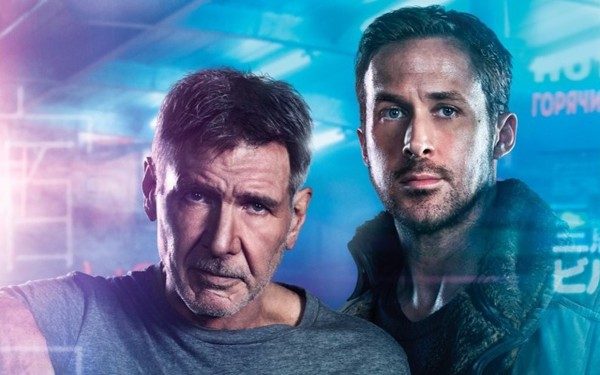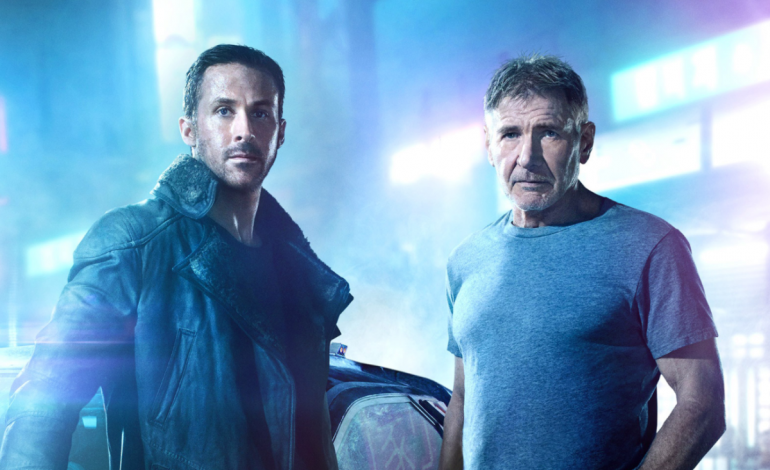

As any interviewer can probably tell you, it takes a lot to make Harrison Ford crack a smile. The legendary actor has become almost as famous for his gruff, antisocial public presence as for his classic cinematic personas.
Look up any talk show appearance or magazine article featuring Ford and you’ll quickly realize that he’s a man of few words when it comes to self-promotion. He prefers to deal in one-word answers and clipped, canned sentences. And this isn’t a case of Ford growing curmudgeonly with age. He’s been this way from the very beginning.
In a 1977 interview promoting the original Star Wars, a young Ford diverts any responsibility for the film’s success to George Lucas’s brilliant imagination and excellent script, carefully avoiding any discussion of his own performance. His somber tone almost comes across as boredom.
It’s as though he’s been practicing his answers in front of a mirror for hours, and now that it’s time for the actual interview, he’s sick of repeating them. Rarely will you get so much as a genuine chuckle from Ford here, and this trait would remain a constant in virtually all of his public appearances spanning a forty-year career. That is, until quite recently.
Ford’s interviews for the new Denis Villeneuve film Blade Runner 2049 have been unusually fraught with crack-ups, quippy remarks, and actual smiles. The reason for such cheerfulness is not the film itself, which has been noted for its dark, dystopian atmosphere. Rather, it can all be traced to Ford’s co-star, fellow screen icon Ryan Gosling.
The two actors met on the set of the new sci-fi epic and reportedly struck up an unlikely friendship. While it may be odd to imagine Ford befriending anyone, in the case of Gosling it might not be as crazy as it sounds.
In the new film, a sequel to the 1982 Ford-starring sci-fi classic Blade Runner, Gosling plays a character reminiscent of Ford’s leading man in the original movie. But the similarities between the two do not stop there. Upon closer examination, these celebrities are remarkably alike in a variety of ways, from their cinematic careers to the character type that has come to define them, perhaps against their will.
The first and most obvious point of comparison between the two actors is their presence in the new film. Known only as K, Gosling’s character is, similar to Ford’s Rick Deckard, a detective tasked with hunting down and killing synthetically-produced humans known as replicants. As he begins to uncover a potentially world-shaking mystery, K is forced to seek out Deckard, who has been in hiding for 30 years, in order to at last get the answers he needs.
Director Denis Villeneuve has mentioned that he sought out Gosling for the role in part because he feels that the actor is able to express a range of emotions through details as small as subtle changes in his facial expression or the way he enters a room. Since K appears in nearly every scene in the film, a performer with this sort of palpable presence was a must. Curiously, in one interview, Gosling laid similar praise upon Ford’s acting style, stating that he is able to do so much while appearing to do so little.
Villeneuve elaborated that once Gosling was cast, he became even more of an asset. He offered new ideas for his character that differed from the script, but which Villeneuve saw as strokes of genius. One improvised moment on the third day of shooting with Gosling reportedly gave the director all the confidence he needed in the character and the story to finish the daunting project, and he began referring to Gosling as his muse.
Ford is similarly known for improvising lines of dialogue or suggesting rewrites during shooting, a tendency that has resulted in some of the most iconic scenes in cinematic history. We have Ford to thank for the moment in which an exasperated Indiana Jones pulls a gun and shoots a villainous swordsman rather than waste time engaging in a fair fight, as well as the scene in which Han Solo, in response to Princess Leia’s declaration of love for him, simply states, “I know.”
In fact, when reading the script for Blade Runner 2049, Ford reportedly envisioned Gosling in the lead role, having admired the young star’s work in films such as The Place Beyond the Pines and La La Land. He approached Villeneuve, as well as the film’s producers, to suggest Gosling for the part, to which they responded that they had already been thinking about casting him.
When shooting began, it wasn’t long before the time came for Gosling to greet Ford face-to-face. The moment occurred while the two were preparing for a scene involving a thick layer of mist. Gosling said that he saw Ford’s silhouette walking dramatically out of the fog, as if he had planned a memorable entrance.
Soon, the two found themselves shooting an extended sequence in an underwater tank, and warming up in a hot tub between takes. This gave them a chance to chat, and the actors quickly hit it off.
Their sense of camaraderie and mutual respect is immediately tangible when watching any of their recent talk show appearances. In one interview with WIRED magazine, Gosling compliments Ford on his ability to appear effortless on screen, and Ford jokingly responds by saying, “I was just going to say exactly the same thing about you, only I was going to spin it out a little bit and try and make it sound like I really meant it.”
In another appearance on The Graham Norton Show, Ford swears that a moment in which he punched Gosling on set during an action sequence was an accident, while Gosling laughs. And a recent interview with British talk show host Alison Hammond descended into complete chaos as both Ford and Gosling couldn’t stop giggling. The now-viral video depicts Ford attempting to explain the significance of the new film while Gosling repeatedly interrupts him, after which the two erupt in uncontrollable laughter.
This sort of chemistry goes deeper than a mere bond between co-stars. In fact, it’s not hard to imagine the wealth of common ground the two probably discovered upon first meeting, especially regarding their career progression.
Both Ford and Gosling began their acting careers under contract with major studios. Ford, who gained an interest in acting after taking a drama class at the end of his senior year at Ripon College, moved to Los Angeles in 1964 and signed a contract with the New Talent program at Columbia Pictures. What followed were a series of bit parts and non-speaking roles, with little promise of anything more significant.
The studio reportedly didn’t see Ford’s subdued acting style as star material. The actor soon tired of meaningless roles and signed a new contract with Universal Studios, playing small parts in a variety of television series through the early 1970s.
Still dissatisfied with the work he was being offered, Ford became a self-taught carpenter to supplement his income and shifted his focus away from acting for a time. It was not long after, however, that a casting director landed him an audition for writer-director George Lucas’s American Graffiti.
Ford’s role in the film would drastically accelerate his career, and Lucas cast him again in his next movie, Star Wars. The rest, of course, is history.
Gosling followed a somewhat similar path. Born and raised in Canada, he attended an open audition for The All-New Mickey Mouse Club at age 12 and subsequently signed a two-year contract with Disney as a mouseketeer in 1993. Like Ford, Gosling was given little screen time, as Disney considered the show’s other performers to be more talented. Still, he enjoyed the experience and considered it to be formative.
From there, Gosling continued to be cast in family programs such as Are You Afraid of the Dark?, Goosebumps, and Young Hercules. Hoping to break into film and progress into more serious roles, Gosling landed a supporting part in Disney’s Remember the Titans and then wowed critics with a powerful performance as the lead in 2001’s The Believer. After a handful of other critically-praised roles, Gosling shot to stardom with his performance in the 2004 romantic drama The Notebook.
While Ford’s career throughout the 1970s, 1980s and 1990s was marked by headlining performances in landmark action franchises such as Star Wars, Indiana Jones, and the Jack Ryan films, Gosling built his reputation on popular romantic and comedy fare such as Lars and the Real Girl, Crazy, Stupid, Love, and La La Land.
Curiously, thanks to the massive blockbusters that made them famous, both actors developed a similar character type to which they seemed to revert in most of their well-known performances. Gosling and Ford became known for playing handsome, sarcastic, somewhat arrogant, yet roguish and ultimately likable rebels.
Their leading men may come across as judgmental and brash at times, but we enjoy watching them because they refuse to follow the crowd, they stick to their guns at all costs, and in a less than ideal situation, they are rarely without a snarky one-liner or sharp retort to ease the tension.
These types of performances may have made these two men famous, but each seems to have longed for more. Ford did his best to squeeze in dramatic performances between his stints as an action star.
Such serious movies include Hanover Street, Witness, and Regarding Henry. These roles gained Ford recognition from critics, who noted the impressive emotional authenticity and vulnerability he was able to deliver when freed from the limits of Han Solo’s cocky swagger and Indy’s casual, adventurous charm. The actor even earned an Oscar nomination for his work in Witness.
Gosling also expressed an interest in more serious performances in the early 2000s, and then again in the mid-2000s after achieving mainstream success. He found such roles in smaller movies like Half Nelson, Blue Valentine, and The Place Beyond the Pines. Gosling was praised by critics and audiences alike for the rawness and intensity of his performances in many of these films.
Still, Ford and Gosling remain recognized not for the dramatic vulnerability they’re capable of displaying, but rather for the strong, silent types they bring to the screen in the films that have come to define them (silent, that is, until they have something clever or funny to say). We don’t want to watch them because they make us cry. We’d rather watch them to laugh at their cynical sarcasm and to marvel at their sheer coolness.
Maybe this is why they’ve come together now, as co-stars and as friends. It must be frustrating as an actor to get recognized for only a fraction of the emotional range you’re capable of exhibiting, and perhaps this shared frustration helped to bring the two stars closer.
Or maybe they’re simply able to smile and share a laugh over the craziness of being recognized as movie stars, since both men seem to balk at the absurdity of Hollywood stardom and the passion of their fans. Either way, in their newest film, the two may have actually found an answer to the tension existing between their superstar images and their untapped potential for dramatic expression.
Director Ridley Scott’s original Blade Runner stands out among Ford’s credits. It casts him as the rebellious and capable detective Rick Deckard, seemingly the hero in a tale of humans versus artificial beings. But the movie then defies expectations by dragging his character through an emotional, morally ambiguous existential crisis that ends with him hanging from the edge of a building in the rain while his previously murderous quarry offers a heart-wrenching soliloquy.
The movie employed both Ford’s charming rogue image and his lesser-known talent for playing emotionally conflicted individuals. The new sequel, then, kicks things up a notch by offering a similarly life-altering existential evolution for both Gosling’s K and Ford’s aging Deckard.
Perhaps Blade Runner 2049 gave both actors the chance to flex all of their muscles and show mainstream audiences what they are truly capable of.
Indeed, the film features arguably the most emotive performances Gosling and Ford have delivered in years. The multi-layered and highly philosophical script likely had both actors excited to get to work, so maybe they bonded over their shared passion for the movie and its emotional potential as soon as they met on set.
While none of us may ever be able to fully appreciate the true depth of the strange friendship between Gosling and Ford, keep in mind when you watch Blade Runner 2049 or any of the countless interviews filmed to promote it that the two men have walked a very similar path, sharing many of the same ups and downs. And take comfort in the fact that each may have found the answer to his career frustrations in this unlikely sci-fi sequel – and in each other. Now that’s something to smile and laugh about.

